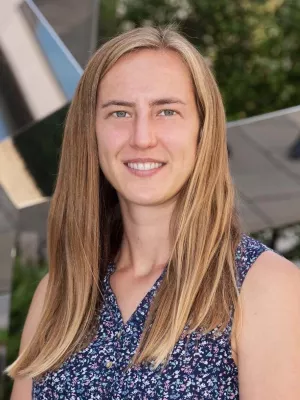
Diane Feuillet
Forskare

SDSS-IV from 2014 to 2016 : A Detailed Demographic Comparison over Three Years
Författare
Summary, in English
The Sloan Digital Sky Survey (SDSS) is one of the largest international astronomy organizations. We present demographic data based on surveys of its members from 2014, 2015 and 2016, during the fourth phase of SDSS (SDSS-IV). We find about half of SDSS-IV collaboration members were based in North America, a quarter in Europe, and the remainder in Asia and Central and South America. Overall, 26%-36% are women (from 2014 to 2016), up to 2% report non-binary genders. 11%-14% report that they are racial or ethnic minorities where they live. The fraction of women drops with seniority, and is also lower among collaboration leadership. Men in SDSS-IV were more likely to report being in a leadership role, and for the role to be funded and formally recognized. SDSS-IV collaboration members are twice as likely to have a parent with a college degree, than the general population, and are ten times more likely to have a parent with a PhD. This trend is slightly enhanced for female collaboration members. Despite this, the fraction of first generation college students is significant (31%). This fraction increased among collaboration members who are racial or ethnic minorities (40%-50%), and decreased among women (15%-25%). SDSS-IV implemented many inclusive policies and established a dedicated committee, the Committee on INclusiveness in SDSS. More than 60% of the collaboration agree that the collaboration is inclusive; however, collaboration leadership more strongly agree with this than the general membership. In this paper, we explain these results in full, including the history of inclusive efforts in SDSS-IV. We conclude with a list of suggested recommendations based on our findings, which can be used to improve equity and inclusion in large astronomical collaborations, which we argue is not only moral, but will also optimize their scientific output.
Avdelning/ar
- Geologiska institutionen
- Astronomi - Har omorganiserats
- eSSENCE: The e-Science Collaboration
Publiceringsår
2023-12-01
Språk
Engelska
Publikation/Tidskrift/Serie
Publications of the Astronomical Society of the Pacific
Volym
135
Issue
1054
Dokumenttyp
Artikel i tidskrift
Förlag
University of Chicago Press
Ämne
- Social Sciences Interdisciplinary
- Astronomy, Astrophysics and Cosmology
Status
Published
ISBN/ISSN/Övrigt
- ISSN: 0004-6280

